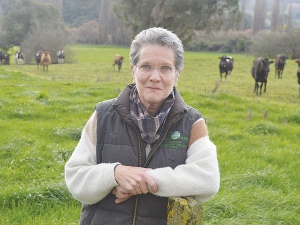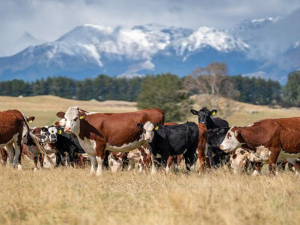The IFCN (International Farm Comparison Network in dairying) has been around for over 20 years but this year due to Covid-19 it got a lot more active.
The absolute benefit of being unable to travel for the networkers in IFCN this year has been the fact that our contact has not been restricted to the one annual conference.
We met weekly from March up to the conference and are meeting monthly still, comparing what is happening in our respective countries, what farmers are coping with, how supply has been impacted and how consumers, government and markets are reacting.
It has been very interesting to hear the varying responses and recoveries at both farm and consumer levels from across the network. Last week the research networkers were able to join the IFCN supporters for their annual conference, which resulted in over 600 dairy people online sharing their views – researchers, farm input firms, farmers, processors from across the world. You can follow their output on https://www.linkedin.com/company/ifcn/.
Back in June after the annual conference of the IFCN that was held, of course, on Zoom, I posted what I saw as a complex jigsaw of events underscored by an increased use and recognition of dairy nutrients in the home. Since then lockdown constraints have lifted in many countries and dairy has settled into a more familiar rhythm.
As is always the case, the price we get for our milk is the result of a delicate balance between supply and demand, and predicting both is always difficult. On top of this, only 7-9% of milk is traded globally so in such a thinly traded market, price volatility is common.
Most countries shared a sharp uplift in retail demand under lockdown, with many networkers sharing personal stories like ‘am doing so much baking, using more butter than ever!’ However, some product sales did not increase and were also hit by the sharp decrease in food service demand; high end cheeses struggled to sell, people weren’t going out and they weren’t entertaining either, this speciality milk was dumped or diverted to fresh milk sales.
Other media stories of farmers dumping milk were due to processors not having the ability to switch quickly to the smaller packaging required for retail sales, a similar issue arose in NZ with flour. The demand from food service varied from country to country, from those where food delivery through lockdown saw increases in cheese sales on pizzas to those where the absence of cafes led to a decrease in liquid milk sales, not always matched by the increasing demand in retail.
Supply looked as though it was going to be compromised at first as some northern hemisphere countries were asking farmers to reduce production just as their spring calving cows were heading to peak production. Those countries are still showing signs of diminished supply this year, but others are not and, with higher milk prices, are increasing supply. Both NZ and Australia have had mild winters and good calving weather so global supply looks set for a reasonable year.
As the impact of Covid-19 begins to unfold, the demand dynamic gets more complicated. In countries like India where milk consumption is very closely related to income levels, decreases in demand are challenging their ability to maintain an equilibrium of supply and demand, surplus milk being turned into milk powder.
In Russia, income uncertainty has resulted in a drop in cheese consumption with several small cheese factories closing and imports decreasing. However, the emphasis on health continues to drive demand for dairy nutrients, maintaining prices as reflected in the futures markets. Yet the analysts persist in forecasting a very different future to the markets, this anomaly is a first for me. Is it that analysts are just more pessimistic or that the markets have got it wrong? Only time will tell. Another first is that oil and milk prices have got divorced, or is it just a temporary separation? Again, only time will tell.
At the IFCN supporters’ conference they asked the 600+ participants what the dairy demand in 2021 might be. The results are interesting, an almost equal split between an increase and a decrease in demand. Historically demand has been growing at about 2% a year. This projection would be for a lower amount, on average. Again, only time will tell.
• Nicola Shadbolt is Professor of Farm and Agribusiness Management at Massey University and a former Fonterra director.


















